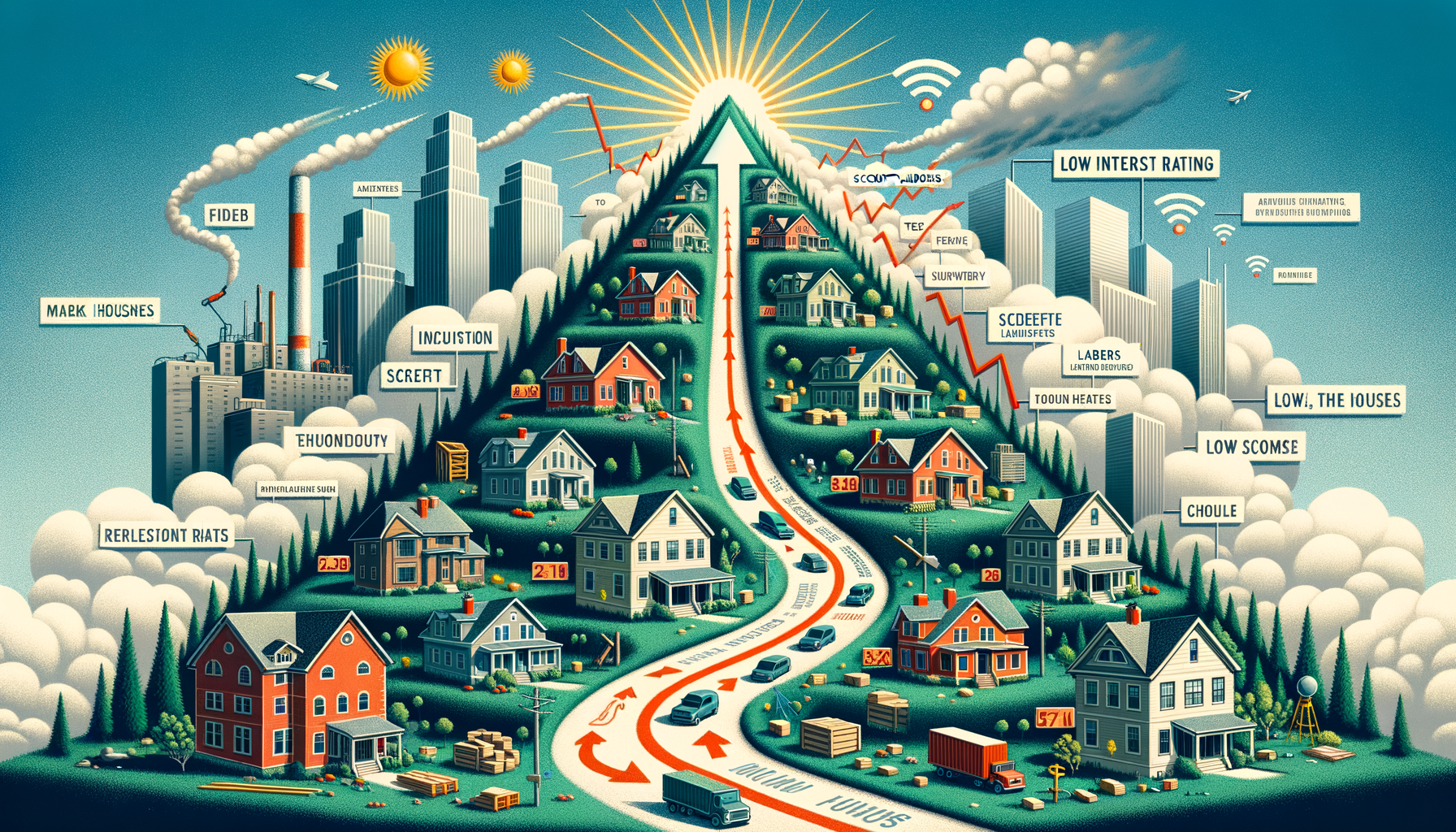“Unpacking the Surge in U.S. Home Prices: An In-depth Analysis”
In the rapidly evolving landscape of the real estate market, keeping a finger on the pulse of home price trends is more crucial than ever. Recent data reveals intricate dynamics influencing these trends, sculpted by various economic and societal undercurrents.
### Understanding the Surge
Over the past years, we have witnessed a robust acceleration in home pricing across the nation, a phenomenon fueled primarily by limited housing inventories coupled with a surge in demand. This demand has origins rooted not only in the natural growth of the populace but also in the increased viability and acceptance of remote working arrangements prompted by the recent global scenarios.
### The Forces at Play
#### 1. Economic Indicators
Economic health is a pivotal factor influencing home prices. Key indicators such as employment rates, wage growth, and consumer confidence impact people’s ability to purchase homes. Currently, the job market remains resilient, with relatively low unemployment rates and rising wages, albeit at varying degrees across different regions. Such economic vigor supports higher home prices as more people can afford to enter the market.
#### 2. Interest Rates
Interest rates play a critical role. Lower rates make borrowing cheaper, allowing more potential buyers to secure mortgages. In recent times, we’ve seen historical lows in interest rates, making it an opportune moment for many to buy homes, subsequently driving up demand and, hence, prices. However, buyers should remain vigilant—what goes down might come up. Predictions suggest a possible hike in interest rates, potentially cooling the market somewhat by increasing the cost of borrowing.
#### 3. Population Growth and Demographic Shifts
Regions experiencing significant population growth often see increased demand for housing. The Sunbelt states, for example, have seen a noteworthy influx of residents attracted by milder weather, more affordable living, or retiree-friendly environments. Additionally, demographic shifts like millennials entering the home-buying stage en masse have put distinctive pressures on the market, escalating competition and prices.
### Regional Variations
While the overarching trend in home prices is upward, regional variations are significant. for instance:
– **Sunbelt Surge:** States like Florida, Texas, and Arizona have seen prices surge due to the influx of new residents and overall lower cost of living compared to coastal cities.
– **Tech Hubs Tension:** Cities like San Francisco, Seattle, and Boston continue to experience high home prices, powered by the persistent tech boom and high-paying job markets.
– **Midwest Stability:** In contrast, many Midwestern cities have seen more stable or modest growth in home prices due to slower population growth and economic transformation.
### Housing Inventory Levels
One of the most direct influencers of home prices is the level of available housing inventory. A lower inventory means less choice for buyers, which can lead to bidding wars and increased prices. Recently, inventory levels have been notably low, exacerbating competition and pushing prices up. Various factors, from slower rates of construction due to regulatory hurdles and material costs to homeowners hesitating to sell amidst a hot market, contribute to this scarcity.
### Exploring the Construction Conundrum
Despite high demand, new construction hasn’t kept pace, further straining available inventory. The reasons are manifold:
– **Rising Costs:** The cost of construction materials has climbed, partly due to supply chain disruptions. Additionally, labor shortages in the construction industry have led to increased wages, pushing the overall costs of homebuilding up.
– **Regulatory Environments:** In many areas, regulatory burdens have slowed down the pace of new constructions. From obtaining permits to zoning laws and environmental regulations, these obstacles add time and cost to projects.
### The Impact of Technology and Remote Work
The rise of remote work has had a nuanced impact on home prices. As more companies adopt remote or hybrid models, employees are less tethered to office locations. This flexibility has allowed many to move away from expensive urban centers to more affordable locales, boosting demand and home prices in previously less sought-after areas. Moreover, the value placed on home attributes has shifted; more space, a dedicated office, or amenities like a good internet connection have become significant considerations.
### Looking Ahead: Sustainable Growth or a Market Correction?
Forecasting the future of home prices is complex, involving multiple, often unpredictable, variables:
#### Possible Cooling Factors:
– **Interest Rate Increases:** As mentioned, higher interest rates make mortgages more expensive and could cool off some of the fervor in the housing markets.
– **Economic Downturns:** Should the economy face downturns or significant job losses, demand could diminish, leading to stabilizing or declining home prices.
– **Increased Housing Supply:** If new constructions can catch up or surpass demand, this could also help stabilize prices.
#### Continued Growth Drivers:
– **Ongoing Low Inventory:** If inventory remains low amidst strong demand, prices are likely to continue rising.
– **Demographic Demand:** As more millennials and Gen Z enter the market and start families, their demand could continue to prop up the market.
### Conclusion
Navigating the real estate market today requires understanding a complex interplay of economic, demographic, and societal factors. From the trenches of economic frameworks to the influence of technological advancements, the variables at play are numerous and interconnected. Whether you’re a buyer, seller, or investor, staying informed is key—not just understanding where prices are today, but where they’re headed tomorrow. While the trajectory points upwards now, a confluence of factors might alter that path. As such, approaching the market with a blend of caution, patience, and readiness can help capitalize on potential opportunities while mitigating risks.

